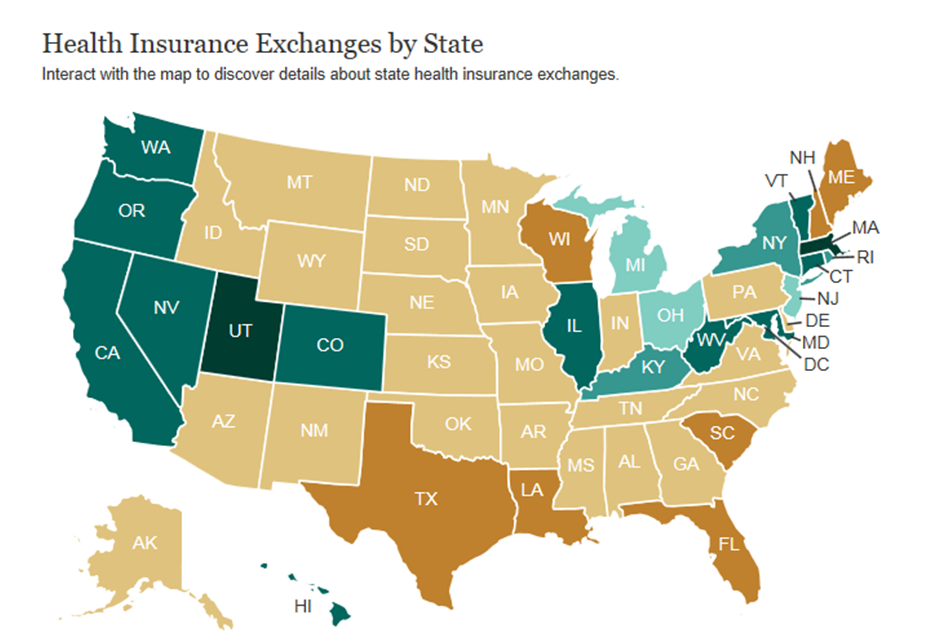After congratulating President Obama on his election win and committing to work with his Administration, 31 Republican Governors representing 62% of the country asked Obama for an extension for creating their state’s Health Exchange.
That’s because November 16th is the deadline for states to submit a letter of declaration for a state-based exchange and as of today:
- Only 2 states had health exchanges prior to the Healthcare reform bill (MA & UT). They collectively represent 2% of the country’s total uninsured population.
- Another 12 states (WA, OR, NV, CA, CO, IL, WV, DC, MD, CT & VT) have passed Health Exchange legislation representing 28% of the country’s total uninsured population.
- 3 States have signed executive orders to build an exchange representing 7% of the country’s total uninsured population.
- Another 3 states are very close to passing legislation with representing 9% of the country’s total uninsured population.
So only 46% of the uninsured population across the country lives in a state that is well on their way to creating a health exchange. Many of the remaining uninsured population lives in a state with a Republican Governor. Specifically:
- 7 states representing 26% of the uninsured population have decided to not pursue a state-based exchange. This includes the states that represent the largest number of people without health insurance; Florida (3.8 million uninsured) and Texas (6.1 million uninsured).
- The remaining 24 states represent 30% of the uninsured population and have yet to are still unsure whether they will pursue a state-based exchange or not.
Republicans are on the fence about exchanges because many of the rules around Health Exchanges have yet to be released. For example, the products sold within the exchange must meet very specific “actuarial value” guidelines. The tool to determine these actuarial values has yet to be released by the Department of Health and Human Services. This makes it nearly impossible to do any fair assessment on how the Health Exchanges might impact the existing individual and small business health insurance markets.
Additionally, there are regulations that require risk sharing to occur between health insurance companies. This assists companies that may enroll a disproportionate share of higher healthcare utilizers. The regulations that specify the risk sharing methodology have yet to be released as well.
As a result, Governors are nervous about committing to building something they do not fully understand. Trying to find answers, Republican Governors on three occasions mailed President Obama a letter asking for detailed responses to over 30 questions surrounding health care reform. One of their biggest worries is how Medicaid will work with Exchanges because last summer the Supreme Court ruled that it was unconstitutional for the Federal Government to force states to increase their Medicaid eligibility to 133% of the Federal Poverty Level. Essentially for many of these red states, there will be a gap between where Medicaid ends and subsidies for Health Exchanges begin. Individuals that find themselves in this gap will still be required to buy health insurance even though it may not have access to subsidies which could make the choices unaffordable.
The National Conference of State Legislatures is a great website for up-to-date information on Health Exchanges.

Source: National Conference of State Legislatures, Federal Health Reform: State Legislative Tracking Database; Politico.com; Commonwealth Fund analysis.
KEY:
Dark Green States – Exchange in place prior to PPACA
Green States – Exchange established through signed legislation
Brown States – Will not pursue state-based Exchange
Tan States – Studying Exchange establishment or pursuing alternative options
Light Blue – Exchange legislation passed or pending in 1 or both houses
Blue – Exchange established through Executive Order
